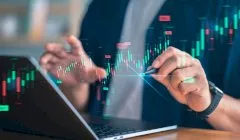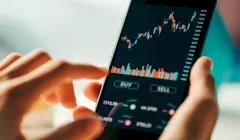Invest
Online investment shows narrowing gender divide
A new report has revealed Australia’s online investment space is seeing the participation gap between male and female users closing.
Online investment shows narrowing gender divide
A new report has revealed Australia’s online investment space is seeing the participation gap between male and female users closing.

The latest research from Investment Trends, the 2019 2H Online Broking Report, has found not only that more Australian women are investing to build their wealth than ever before, Australia is “substantially” ahead of other established markets in this respect.
In celebration of International Women’s Day this 8 March 2020, nestegg is celebrating all things equality and the importance of recognising and realising women’s rights through a financial lens.
While women still do only make up 18 per cent of a cohort of 750,000 active online investors across Australia, Investment Trends’ research director, Recep Peker, observed that “in recent years — and particularly through 2019 — the proportion of Australian women who began investing for the first time grew substantially to 28 per cent of that cohort”.
It’s more than double the rate observed five-plus years ago, he said.

According to Mr Peker, “while more work needs to be done to lift the ratio of women investors, Australia is substantially ahead of established markets such as the UK”, where just 11 per cent of online investors are women.
We aren’t too far behind the United States either, where 21 per cent of online investors are female.
Also in its report, Investment Trends noted a “strong desire” among women investors to learn and further educate themselves.
Mr Peker highlighted how women most often rely on their own personal research and company-produced reports as a foundation for making investment decisions, not dissimilar to their male counterparts.
On the other hand, “they are substantially more likely to collaborate and discuss ideas with their friends and family members”.
Nearly four in 10 females (37 per cent) have indicated they invest in this way, compared to 28 per cent of men.
The research director also considered that “women are also somewhat more likely to seek out the views of prominent investors and commentators, listen to investment-related podcasts and rely on investment-related online forums and blogs.
The same is true for women who want to begin their investing journey in the next 12 months, he added.
“This group — to a vastly higher extent than men — wants to start by investing small amounts of money,” Mr Peker highlighted, with a figure of 52 per cent for females contrasting to 33 per cent of men.
“And they are significantly more likely than men to want education, a good understanding of how to manage risk and the ability to share and learn from the experience of others.
“It is no coincidence, then, that both in Australia and globally, women investors have increasingly embraced low-entry-cost products with ETFs at their core, such as microsavings apps and robo-advice services.”
About the author

About the author


Shares
DREST gears up for innovation with the appointment of new co-CEO and CTO
Luxury fashion and lifestyle mobile game DREST has announced significant leadership changes as it prepares for an exciting phase of development and expansion. Read more

Shares
Hope for investors scared by share and crypto crashes
As share markets and cryptocurrency take a beating following the tightening of monetary policy across the world, investors are contemplating their next move. Read more

Shares
Cannon-Brookes tries to block AGL demerger
Mike Cannon-Brookes is not giving up on AGL after the latter announced 15 June as the date of the demerger vote. Read more

Shares
Qantas set to acquire Alliance Aviation
The two airlines have entered into a scheme implementation deed. Read more

Shares
Bond and share investors may shrug off RBA’s rate hike
As mortgage holders reel from the prospect of having to reach deeper into their hip pockets to make bigger repayments following the Reserve Bank of Australia’s (RBA) interest rate hike from 0Read more

Shares
How to buy Shares: A beginner’s guide in 2022
So you want to get in on the stock market action? Congratulations, that’s an exciting step! But first, there are a few things you should know before you buy your first shares. Read more

Shares
Elon Musk chokes up on bid to swallow Twitter
The battle of the bird has intensified over the last week, as Tesla and SpaceX founder Elon Musk has ramped up his aggressive campaign to buy the entirety of social media giant, Twitter. Read more

Shares
How to Make Money in Short Selling
What is short selling? There is a common practice for people who actively trade in the stock market, which is to “buy low and sell high”, but what if you can still make money by doing the opposite? Read more

Shares
DREST gears up for innovation with the appointment of new co-CEO and CTO
Luxury fashion and lifestyle mobile game DREST has announced significant leadership changes as it prepares for an exciting phase of development and expansion. Read more

Shares
Hope for investors scared by share and crypto crashes
As share markets and cryptocurrency take a beating following the tightening of monetary policy across the world, investors are contemplating their next move. Read more

Shares
Cannon-Brookes tries to block AGL demerger
Mike Cannon-Brookes is not giving up on AGL after the latter announced 15 June as the date of the demerger vote. Read more

Shares
Qantas set to acquire Alliance Aviation
The two airlines have entered into a scheme implementation deed. Read more

Shares
Bond and share investors may shrug off RBA’s rate hike
As mortgage holders reel from the prospect of having to reach deeper into their hip pockets to make bigger repayments following the Reserve Bank of Australia’s (RBA) interest rate hike from 0Read more

Shares
How to buy Shares: A beginner’s guide in 2022
So you want to get in on the stock market action? Congratulations, that’s an exciting step! But first, there are a few things you should know before you buy your first shares. Read more

Shares
Elon Musk chokes up on bid to swallow Twitter
The battle of the bird has intensified over the last week, as Tesla and SpaceX founder Elon Musk has ramped up his aggressive campaign to buy the entirety of social media giant, Twitter. Read more

Shares
How to Make Money in Short Selling
What is short selling? There is a common practice for people who actively trade in the stock market, which is to “buy low and sell high”, but what if you can still make money by doing the opposite? Read more










